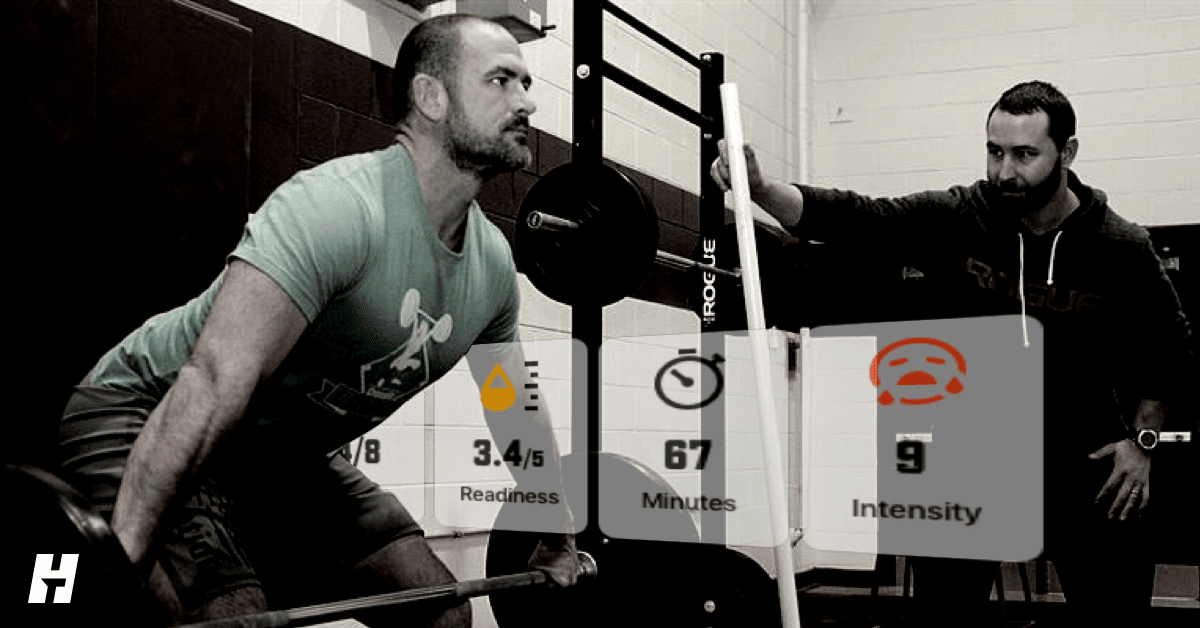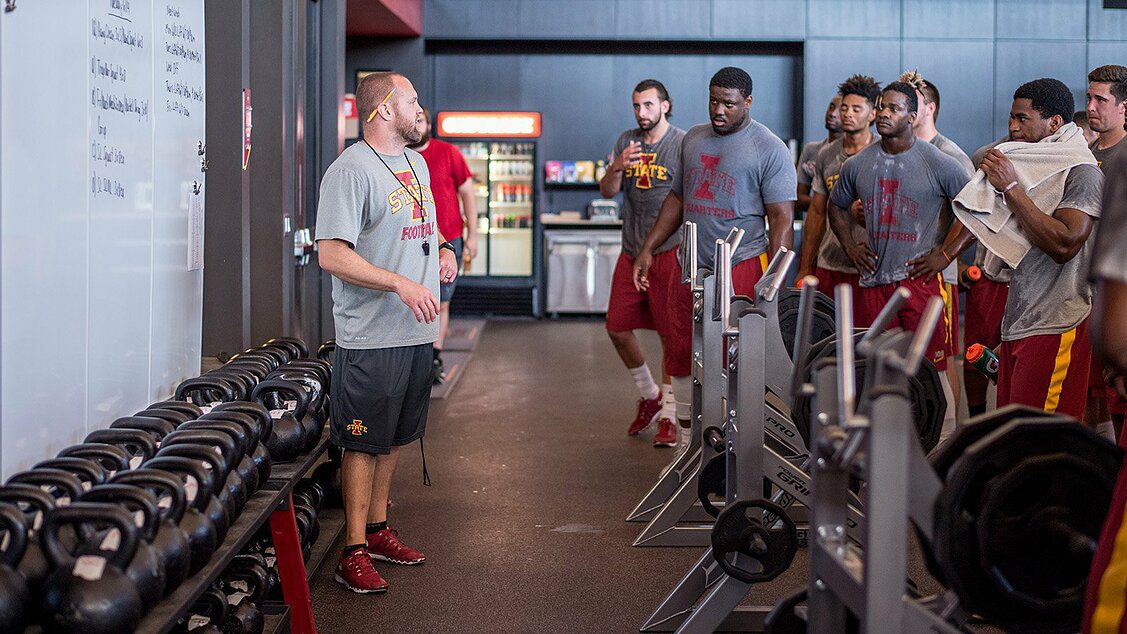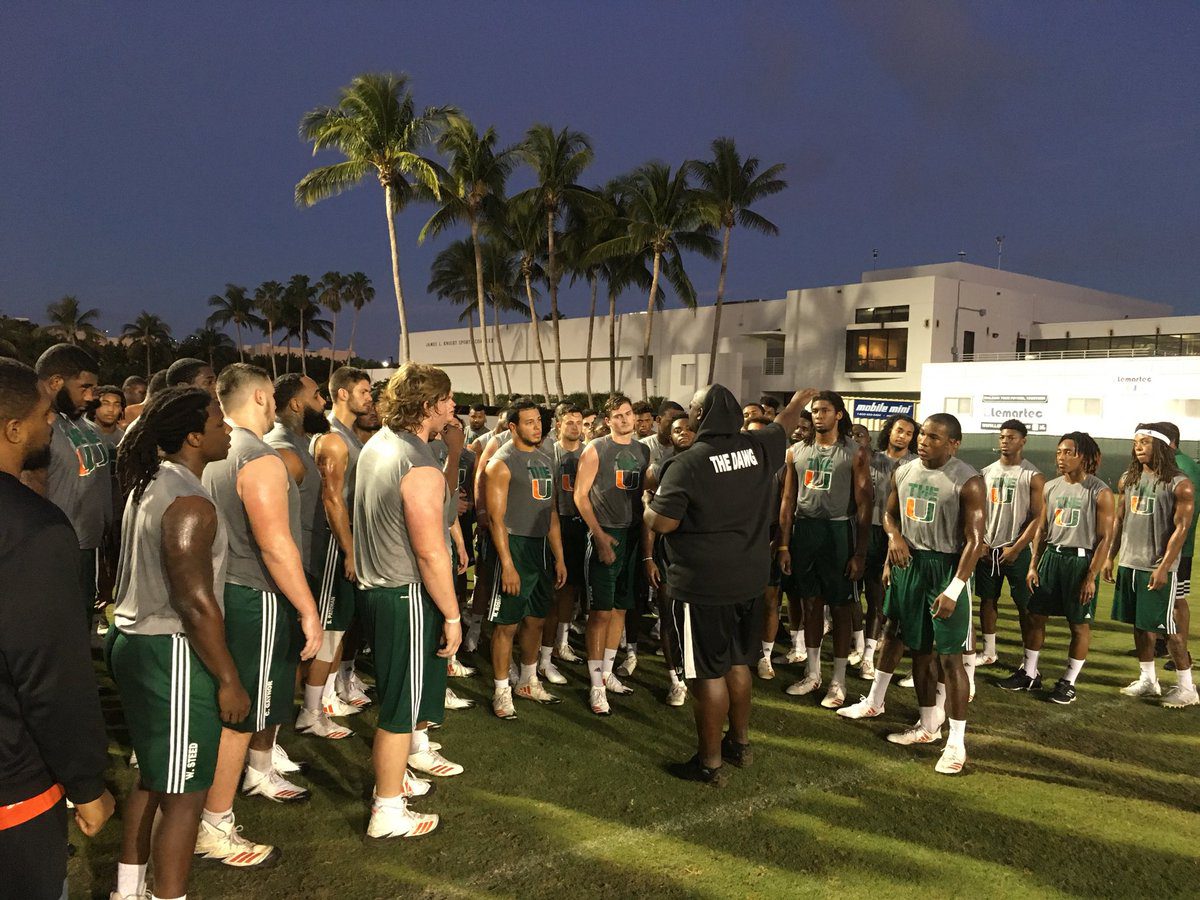How to Weaponize Your Coaching with Athlete Readiness Surveys
Product UpdatesABOUT THE AUTHOR

carl valle
Coach Valle has coached Track and Field at every level, from high school to the Olympic level in the sprints and hurdles. He has had the privilege of working with great athletes that have been All-American and school record holders. A technology professional, Coach Valle has expertise in performance data as well as an understanding for practical application of equipment and software. Carl is currently the lead sport technologist for SpikesOnly.com, and focuses his time on testing elite athletes and using technology to help everyone on any level of human performance reach their goals.
Today, the average strength coach has more responsibilities than they did in the past. They are expected to monitor an entire program, not just the weights and conditioning. Communication with athletes is a key part of success, as we all know, but doing it in an effective manner is a challenge.
Enter: a readiness survey.
A simple readiness survey can make a good program great, and it can help prevent a great program from crashing down due to overtraining or injuries.
Using a readiness survey daily is the strongest ally a coach can have next to another coach, and watching the trends of your training group can make you a better coach if you invest the time into the process.
In this article, I cover why you should start or get back to using readiness surveys, and share how the information can change your coaching process. If you are not using a readiness survey now, you need to step up your game. If you already are, science and expert coaches have made our job a little bit easier.
// Supercharge the Science into Coaching

Image 1. Readiness survey data should be easy for the athlete to log, and easy for the coach to access and analyze. Over time, a coach will be able to guage the readiness of his athletes, both from a team perspective and an individual perspective. Sample above is from inside the TrainHeroic calendar.
A readiness survey is a frequently asked series of short questions that athletes answer about how they feel and how they are recovering from training. They are exactly what their name implies: a direct question of an athlete’s status to train for that moment.
Using them fosters better communication and results.
Asking subjective questions is an effective way to improve a training program according to the science, but only if you use them consistently will they make a difference.
If they don’t have any information from the athletes they work with, coaches will worry constantly about overtraining or fatigue, and sometimes about being too conservative. Readiness surveys reduce either doing too little or too much… and sometimes shed light on the wrong type of training.
If you truly value listening to your athletes, then do it every day and do it efficiently.
It’s easy to say you communicate well with an entire team, but if you are honest, it’s hard to juggle dozens of athletes in your head every day without help. Every coach values communication, but doing it without a readiness survey is difficult logistically.
Starting out with an organized summary of groups is the best way to keep training on the right track and ensure athletes are not left behind.
Plenty of research is available now to show how valuable and useful subjective monitoring is, and the work of Anna Saw, Shane Malone, Martin Buchheit, Aaron Coutts, and others like Dr. Sands is more than enough evidence for the inclusion of readiness surveys.
One of the fathers of modern monitoring is Dr. Sands. His work from decades ago is still useful today. If you want to make a difference with results, training needs to be complemented with science.
But the main issue of readiness surveys is that while the science supports their use, most coaches don’t add enough or any energy behind them. After a few weeks of daily questions, typically the honeymoon period wears off with athletes, and the coach is now the villain for asking for information on how they feel over and over again.
I don’t blame athletes for getting annoyed, as most of the questionnaires are rarely connected to the training and get old quickly, but that’s due the process, not the science.
If you don’t put the passion into communication with your athletes like you do with sets and reps, the best you have is just guesswork.
Science can only help if it’s valued by coaches and athletes, and if it’s not implemented properly, the compliance fades fast.
// Real Benefits of Asking the Right Questions
I have three experiences that really hit home the value of readiness surveys. After careful reflection, I know I am not the only one facing issues with accountability, unexpected challenges, and the management of variables.
Here are three lessons in particular I have learned over the years that have turned into advantages.
Lesson 1: Coach and Athlete Accountability
Athletes today need accountability more than ever. Being accountable is simply being honest and taking ownership of both training and recovery. Athletes who are not accountable are often dodging responsibility and are brilliant finger pointers to everyone else besides the person in the mirror.
The best reflection is a readiness survey, as it forces athletes to put in their own words what is going on in their recovery and readiness. Athletes who are fibbing about sleep and other hidden training factors like diet will see their peers improving. This will force them into a reality check.
Conversely, if the training program itself is the problem, the information from readiness surveys will force coaches to rethink what they are doing. Bad readiness trends and poor training outcomes will be enough to nudge honest coaches to go back to the drawing board.

Lesson 2: Dealing with Unexpected Challenges
Readiness surveys are the first line of communication between what is going on and the athlete. Using readiness surveys daily is a quick and effective process, and translates a lot of information into a quantitative summary.
Watching their trendlines is an easy way to keep tabs on the wellbeing of an athlete, and keeps coaches nimble to change if necessary.
One of the biggest challenges is when an athlete provides information that requires a coach to redirect their program to “Plan B” – knowing earlier is ideal.
Many times in training an alarm response isn’t necessary, as training or life challenges encountered are slow creeping problems. Readiness surveys are perfect solutions to deal with the unexpected realities they face daily, and adjusting to those events is how a program can keep the goal the goal, as Dan John says.
The best reflection is a readiness survey, as it forces athletes to put in their own words what is going on in their recovery and readiness. Athletes who are fibbing about sleep and other hidden training factors like diet will see their peers improving. This will force them into a reality check.
Conversely, if the training program itself is the problem, the information from readiness surveys will force coaches to rethink what they are doing. Bad readiness trends and poor training outcomes will be enough to nudge honest coaches to go back to the drawing board.
Lesson 3: working with others

Even sports medicine can see the data, and it centralizes what is going on daily. Quick summaries of readiness is an athlete’s dashboard internally and physically, and using them fosters not only communication between the athlete and the coaching staff, but also the support staff.
Getting on the same page isn’t easy with teams and facilities, but readiness surveys force everyone to be working together collectively.
// Turn Readiness into a Priority and a Better Training Session
Readiness surveys work scientifically, but only if you put the work into making them appear valuable in your program. If you want to use a readiness survey with your athletes and get something out of them, you need to sell it, reinforce it, and actually use the data.
Selling readiness surveys can be easy or very hard, depending on the culture of the team or environment, and the level of sport.
As the competition level increases, the power of the coaches and support staff decreases generally speaking. Still, if you want to sell the survey, treat it like a gateway to service, meaning if an athlete wants or needs something, communication through the app is necessary.
Another selling point is the short note section that allows an athlete to express what they feel needs to be shared openly. I would argue that if a coach could read just one sentence of what an athlete is feeling over a year, that alone would be worth the time and effort.

Perhaps the most important way to make a readiness survey resonate is to use the data just as much as they give it.
If the athlete doesn’t feel an equal exchange exists between giving information and the coach using it, they will rush through the questions and give information that lacks careful reflection and thought. If you don’t make modifications from the communications of your athletes, they will not put the effort in with the process.
Even if you don’t adjust the training, make sure you still communicate to athletes why you are prescribing the session the same way.
When using a readiness survey regularly, the work is done by the software to help guide you like a GPS. In combination with coaching experience and deductive reasoning, training programs are sharper and more individualized instead of blind guess work.
// Commit to communication
A good readiness survey can do so much for anyone who places full effort into them, and it’s easy to get distracted and look for the next best thing in training.
We all know communication is a timeless necessity in coaching, but if you can’t get it done consistently, results will suffer and confidence in the training program will decline. I have access to some of the best technologies such as athlete tracking, physiological monitoring, and blood analysis, but without simple athlete reporting questions, it will only be limited.
Monitoring athletes with a core set of questions is more important today than ever, and using the methods I learned from the best minds in sports science will make a big impact in your coaching.
Are you a better coach after reading this?
More coaches and athletes than ever are reading the TrainHeroic blog, and it’s our mission to support them with usefull training & coaching content. If you found this article useful, please take a moment to share it on social media, engage with the author, and link to this article on your own blog or any forums you post on.
Be Your Best,
TrainHeroic Content Team
HEROIC SOCIAL
HEROIC SOCIAL
TRAINING LAB
Access the latest articles, reviews, and case studies from the top strength and conditioning minds in the TH Training Lab

